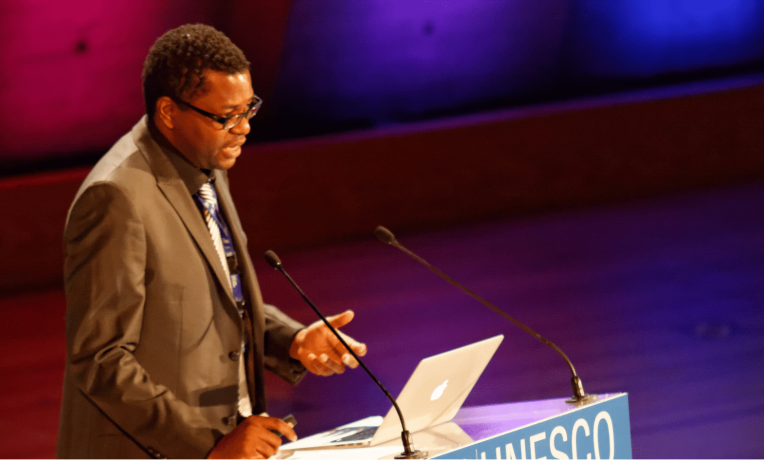Research beyond borders

Yanne K. Chembo, ERC grantee from Cameroon, shares his own experiences and views on international cooperation in research.
My academic life has spanned four countries – Cameroon, Spain, France and USA – on three continents. I have undoubtedly been shaped by this international experience for the better.
Indeed, much is said today about the benefits of international cooperation, to the point where it is sometimes perceived as a timeworn cliché. It is obvious that international cooperation is the bedrock of modern science. Everyone knows that the greatest on-going scientific projects are organized as international consortia, such as the LHC, ITER, LIGO, or the ISS just to name a few. However, it is always interesting to analyze how this process works at the level of policy makers, research institutes and scientists.
The first point is that international collaborations do not start with gathering people from different countries in the same room – or worse, email thread – and urging them to work together. The human element plays a central role here and in general, it is difficult for researchers who have never met each other to engage in genuine, lasting scientific cooperation. It is at this level that international conferences, symposia and meetings play an essential incubating role, allowing the researchers to meet each other and spontaneously build robust networks based on shared interests. However, this international element can only be leveraged if event organizers make sincere efforts to increase the participation of researchers from all over the world, and particularly, from developing countries.
The second point is that beyond shared interests, empirical evidence shows that international collaborations are also built based on affinity. My personal experience is that affinity pools are radically expanded when scientists are offered the opportunity to visit research groups or participate in scientific events held in countries outside of their cultural zone of comfort.
I will take the example of Africa, since I am very often asked about how to build networks with our African peers. It is difficult to collaborate efficiently with African scientists when you do not have a good understanding of the landscape of African universities. There are about 30,000 Universities in the world, and according to the US News “2022 Best Global Universities Rankings”, there are 36 African universities in the top 1,000, and 51 in the top 1500 (i.e., top 5% worldwide). Rankings should be considered cautiously and this one is no exception, but they still have the merit to provide an aspirationally objective evaluation based on scholarly metrics such as publications, citations, etc., instead of subjective indicators like reputation. This is why I view positively the efforts from ERC and other international funding agencies as they invest in collaborative endeavors with the vast reservoir of talent in the African continent.
From a more global perspective, the ERC can play a pivotal role to strengthen the international ecosystem of scientific cooperation. The recent pandemic has taught us that most of our problems are inherently global, and that most of the solutions shall be global as well. This mindset is required to solve some of the most fantastic challenges of our time (climate change, pollution, biodiversity, clean energy, artificial intelligence, quantum technology, etc.), along with essential concerns related to our human condition, such as geographically uniform improvement of quality of life and peaceful resolution of conflicts.
This is the real meaning of research without borders.
Bio
Professor Yanne Chembo joined the Department of Electrical and Computer Engineering at the University of Maryland in January 2019, with a joint appointment in the Institute for Research in Electronics and Applied Physics (IREAP). He received a Ph.D. degree in Nonlinear Dynamics from the University of Yaoundé I, Cameroon, in 2005, and a Ph.D. degree in Photonics from the University of the Balearic Islands, Palma de Mallorca, Spain, in 2006. After a first postdoctoral stay with the FEMTO-ST Institute (Besancon, France) and a second one with NASA Jet Propulsion Laboratory (Pasadena, USA), he joined the Centre National de la Recherche Scientifique in 2010 as a Research Scientist, and later on, Research Director where he led a research group focused on the exploration of nonlinear, quantum and stochastic phenomena in optoelectronics, microwave photonics, and laser physics. In 2011, he was awarded an ERC Starting Grant for his project NEXTPHASE (NEXT generation of microwave PHotonic systems for AeroSpace Engineering) and in 2013, he was also awarded an ERC Proof-of-Concept Grant for his project VERSYT (VERsatile, ultra-stable, multi-coherent and compact microwave photonics SYsTems).

